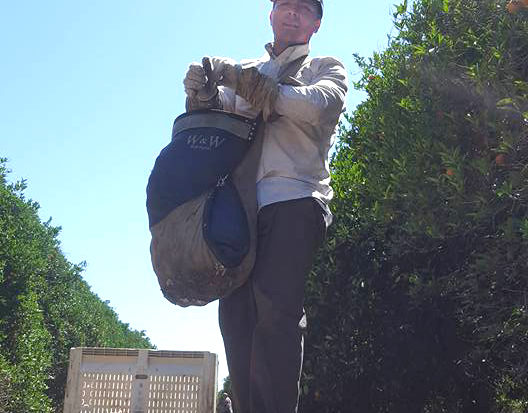
By Benny Corona
California’s Central Valley feeds the United States, producing more than one-fourth of the nation’s food including 40% of the nation’s fruits and nuts. It is also home to the most productive agricultural industry in the United States producing 17.3% of the total U.S. agricultural output. For decades, the Central Valley has been for the United States its greatest source of food security, a key ingredient in broader national security.
The exacerbating climate crisis has been particularly difficult for Central Valley communities where soil health and water quality has gradually declined over the decades. For example, thousands of wells are drying up or becoming contaminated throughout the region in part due to unsustainable agricultural practices and warmer temperatures.
Furthermore, the Central Valley with its current agricultural infrastructure is projected to see decreases in farm crop yields, chill hours, and economic output.
Considering the current economic and environmental problems the Central Valley is having, it is critical that the political and economic leadership of the region engage in pushing regenerative agriculture into the mainstream of the agriculture industry to support its population whose water, agricultural and environmental infrastructure is increasingly crumbling.
Regenerative agriculture is a type of agriculture that actually promotes the soil health and the health of its surrounding ecology by absorbing carbon from the atmosphere. It is dynamic and holistic by incorporating permaculture and organic farming practices.
These practices include conservation tillage, cover crops, crop rotation, composting, mobile animal shelters and pasture cropping. Such practices increase food production, farmers’ income and drought-resistant soil. There is a plethora of evidence that demonstrates how regenerative agriculture can offer mitigation to the current climate crisis.
Regenerative agriculture also promotes water and soil conservation, which, if done systematically throughout the Central Valley, could actually reverse many of the environmental, water scarcity, economic and public health problems the region is having. Most important, it redefines the role of agriculture in the Central Valley; instead of exacerbating the climate crisis, it becomes part of the solution.
A Pictogram by the Intergovernmental Panel on Climate Change (IPCC) demonstrating Carbon Farming
Integral to the success of regenerative agriculture in the Central Valley is the necessary infrastructure support from the State of California and the federal government. For example, regenerative agriculture has become widely successful in other parts of the country where there is infrastructure support, specifically Colorado, where it has reached mainstream status.
There are current programs trying to do this in California such as the healthy soils program that has appropriated $15 million in funds to promote regenerative agriculture.
Political networks, city and county leadership, farming communities and farmworkers, among others, in the Central Valley should take advantage of these regenerative agriculture grants as they will provide much needed economic stimulus to Central Valley communities, potentially save the businesses of many small farmers and can be the foundation for a regenerative agriculture infrastructure.
Today, the Central Valley is facing predicted declines in avocado yield of 40% and up to 20% in other products such as oranges, grapes and walnuts by the 2060s. Taking these numbers into account and how the growing climate crisis is endangering California agriculture, Central Valley communities need to act with urgency.
Regenerative agriculture has the potential to uplift Central Valley families, ecologies, farms and public health and to reverse many of our economic, soil health and water quality problems. It could well be the future of the Central Valley agricultural landscape.
*****
Benny Corona is currently a graduate student at the UC Berkeley Goldman School of Public Policy. He is a Maddy Institute Wonderful Public Service Fellow working to improve Central Valley communities. He is also a UC Berkeley Chancellor’s Public Service award recipient for his contributions to the Central Valley. He was born and raised in Lindsay and has worked most of his life in farms throughout the region. Contact him at bcorona417@berkeley.edu.
Advertising


[…] y la vida silvestre en peligro de extinción. Una transición de la agricultura industrial hacia Las prácticas regenerativas pueden proteger los medios de vida de los trabajadores agrícolas y las comunidades, salvaguardar […]